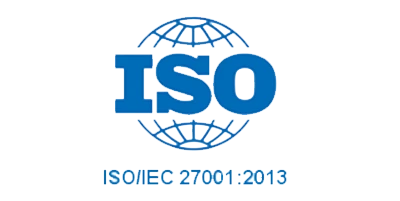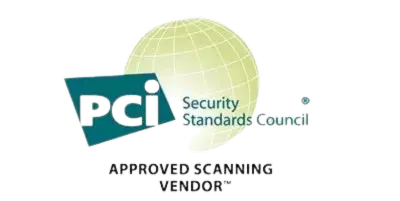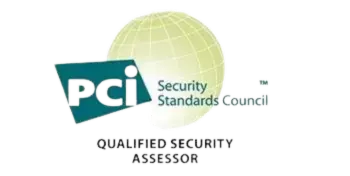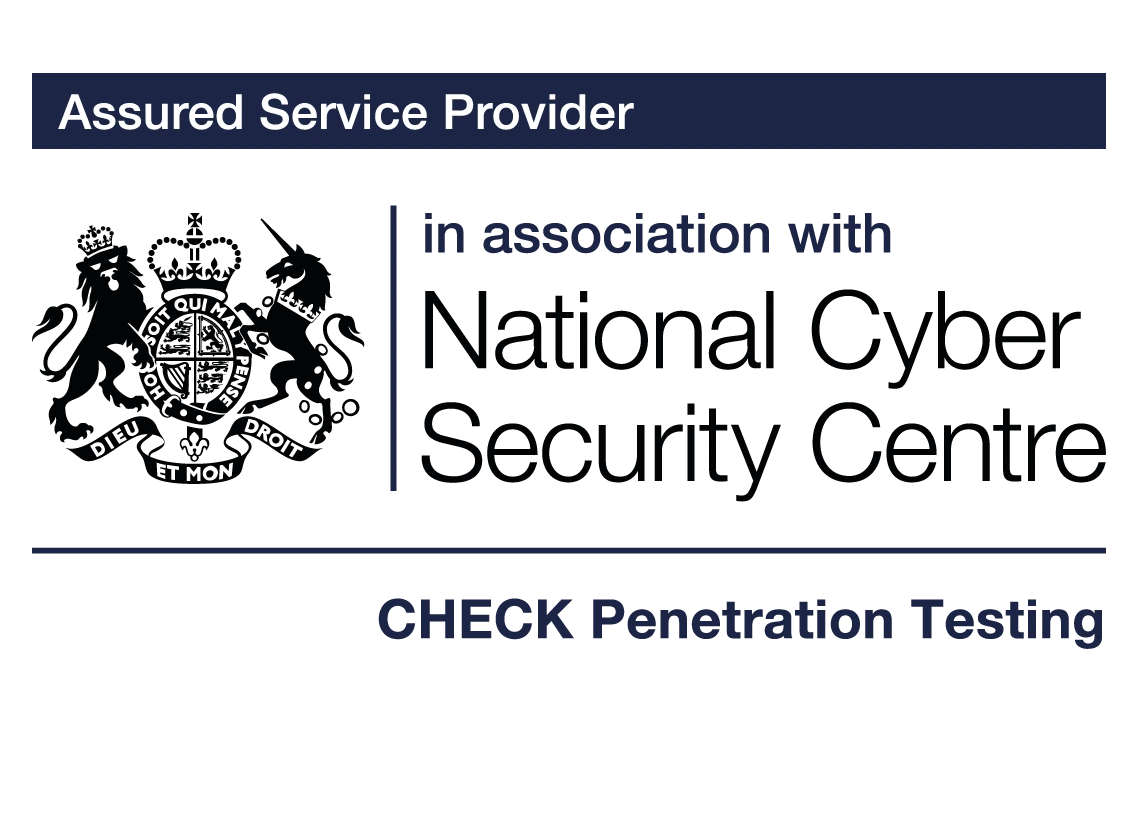What Is A Cyber Maturity Assessment?
Understanding where your organisation stands in terms of cyber-security maturity is not just an advantage—it's essential in creating a effective defense. A Cyber Maturity Assessment (CMA) offers a comprehensive evaluation of your organisation's cyber-security practices, policies, and procedures, bench-marked against globally recognised standards.

Why A Cyber Maturity Assessment?
The Cyber Maturity Assessment (CMA) emerges as a critical strategic tool designed to provide a comprehensive evaluation of an organisation's cyber-security posture. It gauges the effectiveness of existing cyber-security practices against internationally recognized standards and identifies key areas where improvements are necessary.
This article outlines ProCheckUp's approach to conducting a CMA, ensuring that it addresses the specific cyber-security needs and challenges of our customers. The process is delineated into several key phases, each critical to the assessment's success: Initiation, Data Collection, Analysis, Report Generation and Review, Roadmap Development, and Feedback and Iteration.
Components of An Cyber Maturity Assessment:
- Current State Analysis: Evaluate your existing cyber-security controls, technologies, and processes.
- Risk Assessment: Understand potential threats specific to your industry and business model.
- Benchmarking: Compare your practices against industry standards and best practices.
- Gap Analysis: Identify areas where your cyber-security practices fall short.
- Roadmap Creation: Develop a structured plan to advance your cybersecurity maturity over time.
1. Initiation Phase
In the Initiation and Planning phase of a Cyber Maturity Assessment (CMA), it's crucial to establish a clear foundation and prepare adequately to ensure the assessment effectively addresses the organisation's specific cyber-security needs and challenges.

Here's a breakdown of this phase:
Objective Clarification
Engage with client stakeholders to fully understand business objectives, existing cyber-security infrastructure, and specific areas of concern. Define the scope of the assessment, including the identification of critical assets, systems, and data that will be evaluated.
- Stakeholder Engagement: Conduct initial meetings with key stakeholders to understand their cyber-security concerns, expectations, and objectives. This includes defining the critical assets, systems, and processes that need to be prioritised during the assessment.
- Scope Definition: Clearly define the scope of the assessment. Determine whether it will cover the entire organisation or specific divisions, types of data, technologies, and geographic locations. This helps in tailoring the assessment to the most critical areas.
Team Assembly
Form a team comprising cyber-security experts with knowledge in relevant domains, such as risk management, asset management, compliance, and cyber-security architecture.
- Expert Team Formation: Assemble a team of experts tailored to the organisation's industry and specific needs. This team should include cyber security specialists with expertise in areas such as network security, application security, compliance, risk management, and incident response.
- Roles and Responsibilities: Assign clear roles and responsibilities to each team member to ensure efficient execution of the assessment process. This might include a project manager, lead assessors, technical experts, and support staff.
Tools and Resources
- Selection of Frameworks and Standards: Decide on the cyber-security frameworks and standards that will be used as benchmarks for the assessment, such as NIST Cyber-security Framework, ISO 27001, or industry-specific regulations like HIPAA for healthcare or PCI DSS for credit card data.
- Assessment Tools: Identify and prepare the tools and resources needed for the assessment. This could include vulnerability scanners, penetration testing tools, and data collection templates.
- Documentation Preparation: Prepare templates for data gathering, such as questionnaires and checklists, and for reporting, such as the structure for the final assessment report.
Initial Data Gathering
- Document Review: Collect and review existing cyber-security policies, procedures, and documentation to understand the current cyber-security posture. This includes security manuals, previous audit reports, and incident response plans.
- Pre-assessment Survey: Distribute a pre-assessment survey to gather preliminary information from various departments. This helps in identifying perceived vulnerabilities and areas that require deeper investigation during the field assessment.
Project Kickoff
- Kickoff Meeting: Conduct a kickoff meeting with all relevant stakeholders and the assessment team to outline the assessment process, timelines, expectations, and communication protocols.
- Communication Plan: Establish a communication plan that details how findings and progress will be reported, who will be the points of contact, and how sensitive information will be handled during the assessment.
Conclusion
The initiation phase is critical as it sets the stage for a successful and effective Cyber Maturity Assessment. By meticulously planning and preparing through the steps outlined in this chapter, organisations can ensure that the CMA is comprehensive, targeted, and aligned with their specific cybersecurity needs and objectives. The subsequent chapters will delve deeper into the following phases of the CMA, building upon the foundation laid in this initial phase.
2. Data Collection Phase
The Data Collection phase of the Cyber Maturity Assessment (CMA) is critical for gathering the necessary information to analyze and assess the cyber-security posture of an organisation effectively. This comprehensive approach to data collection ensures that the CMA captures a holistic view of the cyber-security landscape of the organisation. The information gathered provides a solid foundation for the subsequent analysis and evaluation phases of the CMA, enabling targeted and effective recommendations for enhancing the cyber-security maturity of the organisation.

Here's a structured approach for conducting this phase:
Interviews and Workshops
- Structured Interviews: Conduct detailed interviews with key stakeholders across the organisation, including IT staff, security officers, network administrators, and business unit leaders. The aim is to gather insights on the current cyber-security practices, challenges, and perceptions of risk.
- Workshops: Organise workshops with cross-functional teams to facilitate discussions about common security concerns, experiences with past security incidents, and existing security measures. This collaborative approach helps in uncovering hidden vulnerabilities and operational insights.
Technical Assessment
- Network Scans: Use automated tools to perform scans of the network to detect vulnerabilities, such as unpatched software, open ports, and insecure configurations in the network infrastructure.
- System Baseline Analysis: Collect and analyze current system configurations to establish baselines for security configurations across critical systems. This includes operating systems, application software, and network devices.
- Penetration Testing: Conduct controlled penetration tests to simulate cyber-attacks and identify weaknesses in security defenses that could be exploited by attackers.
Policy and Procedure Review
- Documentation Review: Assess existing cybersecurity policies, procedures, and controls documentation. This review helps to determine the alignment of organisational policies with industry standards and regulatory requirements.
- Compliance Checks: Review compliance with applicable laws, regulations, and standards (e.g., GDPR, HIPAA, PCI-DSS) to ensure that the organisation meets all legal and regulatory obligations.
Data Flow Analysis
- Data Mapping: Identify and map out the flow of sensitive data within and outside the organisation. Understand how data is stored, processed, and transmitted across systems and networks to pinpoint critical areas that require enhanced security measures.
- Third-party Services Assessment: Evaluate the security measures of third-party services and vendors, especially those who handle sensitive data or critical operations. Assess the risks associated with these external entities and their impact on the organisation’s security posture.
Asset Inventory
- Asset Identification: Compile a comprehensive inventory of all IT and OT assets, including hardware, software, and data assets. This inventory should include details about asset ownership, location, and the criticality of the asset to business operations.
- Vulnerability Assessment: Assess each asset for vulnerabilities using automated tools and manual methods. Prioritize the vulnerabilities based on the risk they pose to the organisation.
Environmental and Operational Review
- Physical Security Checks: Assess the physical security controls in place at critical facilities, including data centers, server rooms, and offices. Check for access controls, surveillance systems, and other security measures.
- Operational Security Practices: Review the operational practices related to cyber-security, such as user access management, incident response procedures, and security monitoring capabilities.
Conclusion
The Data Collection phase is critical for laying the groundwork for insightful analysis by capturing a detailed picture of the organisation’s cyber-security landscape. The structured approach outlined in this chapter ensures that every critical element is examined, providing a solid foundation for the subsequent Analysis phase. The findings from this phase will enable targeted recommendations and actions to bolster the organisation's cybersecurity maturity and resilience, as detailed in the following chapters of this methodology document.
3. Analysis Phase
The Analysis phase of the Cyber Maturity Assessment (CMA) involves a detailed examination of the data collected to identify vulnerabilities, assess risks, and evaluate the overall cybersecurity posture of the organisation. This phase is critical for transforming raw data into actionable insights.

Here’s how you can structure this phase:
Risk and Threat Analysis
- Identify Threats: Analyse the threat landscape specific to the organisation, considering both internal and external threats. This includes understanding potential attackers, their capabilities, and their likely targets within the organisation.
- Assess Vulnerabilities: Review the vulnerabilities identified during the data collection phase, categorizing them based on severity and the potential impact on business operations.
- Risk Assessment: Combine the threat and vulnerability analysis to assess the risk to the organisation. Use risk matrices or quantitative methods to prioritise risks based on the likelihood of occurrence and potential impact.
Maturity Level Assessment
- Framework Alignment: Evaluate the organisation’s cybersecurity practices against chosen frameworks like NIST, ISO, or C2M2. Determine the maturity level of each security domain (e.g., identity and access management, incident response, asset management).
- Benchmarking: Compare the organisation's cybersecurity maturity with industry benchmarks or similar organisations. This comparison helps in understanding where the organisation stands in its sector and highlights areas for improvement.
- Best Practices Evaluation: Assess the adherence to recognized cybersecurity best practices across different areas, identifying gaps in practices that could enhance security posture.
Gap Analysis
- Current vs. Desired State: Analyze the differences between the current state of cybersecurity practices and the desired state as defined by the organisation’s goals and industry standards.
- Identification of Gaps: Identify specific areas where the organisation falls short of cybersecurity standards or where improvements could significantly reduce risk.
- Impact Analysis: Evaluate the potential business impact of identified gaps, considering factors like operational disruption, financial loss, and reputational damage.
Compliance Review
- Regulatory Compliance: Review the organisation’s compliance with applicable cybersecurity regulations and standards. Identify any areas of non-compliance and the associated legal or financial risks.
- Policy Effectiveness: Evaluate the effectiveness and comprehensiveness of existing cybersecurity policies and procedures in meeting compliance requirements and supporting security objectives.
Security Architecture Review
- Architecture Assessment: Review the security architecture for resilience and robustness. Assess how well the security controls are integrated into the IT and OT environments.
- Control Effectiveness: Evaluate the effectiveness of implemented security controls in mitigating identified risks. Determine if any controls are outdated, misconfigured, or ineffective.
Incident Response Evaluation
- Response Capabilities: Assess the organisation’s capability to detect, respond to, and recover from security incidents.
- Response Plan Review: Evaluate the comprehensiveness and effectiveness of the incident response plan, including communication strategies, roles and responsibilities, and recovery procedures.
Conclusion
The Analysis phase is vital for identifying the strengths and weaknesses of the organisation's cyber-security practices. It provides the necessary groundwork for developing targeted recommendations, which are detailed in the subsequent Report Generation and Review phase. The insights gained from this phase are crucial for crafting a strategic roadmap tailored to enhance the cyber-security maturity and resilience of the organisation, as discussed in the upcoming chapters of this methodology document.
4. Report Generation and Review Phase
The Report Generation and Review phase of the Cyber Maturity Assessment (CMA) is where all findings, analysis, and recommendations are consolidated into a structured report. This report is critical as it communicates the assessment results to key stakeholders and guides future cybersecurity enhancements. Here’s a detailed approach to crafting and reviewing this report:

Drafting the Report
- Executive Summary: Begin with an executive summary that provides a high-level overview of the assessment findings, key vulnerabilities, and major risks. This section should be clear and concise to ensure it is accessible to senior management and non-technical stakeholders.
- Methodology Overview: Describe the methodology used for the CMA, including the frameworks and standards applied, the scope of the assessment, and the data collection techniques. This transparency helps validate the findings.
- Detailed Findings: Present the detailed findings from each phase of the assessment. This should include:
Vulnerabilities identified and their potential impacts.
Risks assessed, including likelihood and impact.
Maturity levels of various cyber-security practices.
Compliance gaps with relevant regulations and standards
Analysis and Recommendations
- Gap Analysis: Provide a detailed gap analysis showing the current versus desired states of cyber-security practices.
- Recommendations: Offer specific, actionable recommendations for each identified gap. These should be prioritized based on the risk, impact, and feasibility of implementation.
- Roadmap for Improvement: Include a roadmap that outlines short-term and long-term actions recommended to reach the desired cyber-security maturity level. This should align with the organisation's overall business and IT strategies.
Appendices
- Supporting Data: Append detailed charts, graphs, and tables that provide deeper insights into the data collected and analyzed. This can include risk matrices, benchmarks, and detailed breakdowns of incidents.
- Technical Details: For technical stakeholders, include a section or appendix that delves deeper into the technical findings, methodologies, and justifications for recommendations.
- Reference Materials: List all reference materials, frameworks, and standards used during the assessment, providing a resource for stakeholders to consult for more detailed information.
Review Process
- Internal Review: Before finalizing the report, conduct an internal review with the assessment team to ensure accuracy, completeness, and clarity of the information presented.
- Stakeholder Feedback: Present the draft report to key stakeholders to gather feedback. This can include technical leads, compliance officers, and business unit leaders. Use their input to refine and adjust the report, ensuring it meets the needs and addresses the concerns of all parts of the organisation.
Finalisation and Presentation
- Final Report: Incorporate all feedback and finalize the report. Ensure that it is professionally formatted and easy to navigate, with clear headings, subheadings, and an index if necessary.
- Presentation to Leadership: Schedule a formal presentation of the final report to the senior management and other key stakeholders. This presentation should highlight the key findings, recommendations, and the proposed roadmap.
- Distribution: Distribute the final report to all relevant stakeholders and ensure that they have access to the necessary resources to begin addressing the recommendations.
This comprehensive and methodical approach to report generation and review ensures that the CMA findings are effectively communicated and actionable, setting the stage for meaningful improvements in the organisation's cyber-security posture.
Conclusion
The Report Generation and Review phase is critical for translating the technical and analytical work into strategic actions and clear communication. It ensures that the findings from the Cyber Maturity Assessment are understood and accepted by all stakeholders and that they lay the groundwork for the subsequent Roadmap Development phase. This comprehensive report serves as the foundation for the next steps in enhancing the organisation's cyber-security posture, detailed further in the next chapter.
5. Roadmap Development Phase
The Roadmap Development phase in a Cyber Maturity Assessment (CMA) translates the insights and recommendations from the analysis into a strategic plan designed to improve the organisation's cybersecurity posture over time. This phase is critical as it provides a structured approach to implementing enhancements in a prioritized, manageable way. Here’s how you can structure this phase:

Prioritisation of Recommendations
- Risk-Based Prioritization: Prioritize actions based on the potential risk and impact of identified vulnerabilities. Focus first on addressing high-risk areas that could lead to significant security breaches or compliance issues.
- Cost-Benefit Analysis: Assess the cost-effectiveness of the recommended improvements. Consider both the financial costs and the operational impact, including potential disruptions during implementation.
- Stakeholder Input: Engage with various stakeholders to understand their perspectives and prioritize recommendations that align with business objectives and operational realities.
Development of Implementation Phases
- Short-Term Actions: Identify quick wins that can be implemented immediately to address urgent vulnerabilities and compliance gaps. These should require minimal investment but offer significant improvements in security posture.
- Medium-Term Plans: Outline actions that involve more extensive changes, such as upgrading systems, enhancing training programs, or revising policies. These typically require careful planning, resources, and time to execute.
- Long-Term Strategies: Define strategic initiatives that may involve significant investment in technology, restructuring of teams, or long-term cultural changes within the organisation. These are usually aligned with broader business strategies.
Roadmap Documentation
- Action Items: List specific actions, responsible parties, and timelines for each phase of the roadmap. Clearly define the scope and objectives for each action to avoid ambiguity.
- Resources Allocation: Specify the resources required for each action, including budget, personnel, and technology. Ensure that the allocation aligns with the organisation’s capacity and business cycles.
- Performance Metrics: Establish measurable goals and metrics to track the progress of each initiative. This could include metrics like reduced incident response times, fewer detected vulnerabilities, or improved compliance scores.
Integration with Organisational Processes
- Alignment with Business Objectives: Ensure that the cyber-security roadmap is aligned with the organisation’s strategic business objectives. Cyber-security should support and enable business operations, not hinder them.
- Change Management: Develop a change management strategy to handle the organisational impact of cyber-security improvements. This should include communication plans, training sessions, and feedback mechanisms to ensure smooth transitions.
Review and Update Mechanisms
- Regular Reviews: Schedule regular reviews of the roadmap to assess progress against goals and adapt to new threats or changes in business direction. These reviews should be conducted at least annually or more frequently if needed.
- Adjustments and Updates: Be prepared to adjust the roadmap based on the outcomes of regular reviews, emerging threats, technological advances, and changes in regulatory requirements. Flexibility is key to maintaining an effective cyber-security posture over time.
Stakeholder Engagement and Communication
- Continuous Communication: Maintain open lines of communication with all stakeholders throughout the implementation of the roadmap. Regular updates can help ensure continued support and alignment with business needs.
- Training and Awareness: Implement ongoing training and awareness programs to keep security at the forefront of organisational culture and operations. This is crucial for the long-term success of the cybersecurity initiatives.
Conclusion
The Roadmap Development phase is pivotal in transforming strategic recommendations into actionable steps that tangibly enhance the organisation's cyber-security posture. By methodically planning and documenting each action within a structured implementation roadmap, organisations can systematically address vulnerabilities, improve security measures, and achieve compliance with industry standards. The next chapter, Feedback and Iteration, will discuss how the organisation can maintain this momentum and adapt to evolving cyber-security challenges through continuous feedback and iterative improvements.
6. Feedback and Iteration Phase
The Feedback and Iteration phase in a Cyber Maturity Assessment (CMA) is essential for refining the cybersecurity strategy over time. This phase ensures that the organisation continually adapts its cyber-security measures in response to new challenges, technological advancements, and changing business conditions. Here’s how you can effectively manage this phase:

Feedback Collection
- Stakeholder Reviews: Regularly engage with key stakeholders, including management, IT staff, and end-users, to gather feedback on the effectiveness and impact of the implemented cyber-security measures.
- Surveys and Questionnaires: Distribute surveys or questionnaires to collect quantitative and qualitative feedback from a broader audience within the organisation. This can help assess the general sentiment and awareness about cyber-security practices.
- Incident Debriefs: After any significant security incident, conduct a debrief session to review the event, the effectiveness of the response, and lessons learned. This helps in identifying gaps in the current cyber-security framework.
Performance Analysis
- Review Performance Metrics: Analyze the performance metrics established during the roadmap development phase. Evaluate whether the cybersecurity initiatives are meeting their goals and contributing to the overall security posture.
- Benchmarking: Continuously benchmark the organisation's cyber-security practices against industry standards and competitors. This can provide a relative measure of cybersecurity maturity and effectiveness.
- Audit Results: Use results from internal and external audits to identify areas of non-compliance or weakness that require further attention.
Iterative Improvements
- Prioritize Adjustments: Based on the feedback and performance analysis, identify and prioritize adjustments to cyber-security policies, procedures, and controls. Focus on areas that offer the most significant improvement in security or compliance.
- Update Roadmap: Regularly update the cyber-security roadmap to incorporate new actions, extend timelines, or reallocate resources as needed. Ensure that the roadmap remains aligned with the organisation's strategic objectives.
Training and Awareness Programs
- Ongoing Training: Implement ongoing training programs to keep all employees up-to-date on the latest cybersecurity threats and best practices. Regular training ensures that security remains a top priority throughout the organisation.
- Awareness Campaigns: Conduct regular awareness campaigns to reinforce the importance of cybersecurity and ensure that security considerations are integrated into daily operations.
Change Management
- Manage Organisational Change: As improvements are implemented, use change management strategies to help the organisation adapt to new processes and technologies. This includes managing resistance to change, providing adequate support during transitions, and celebrating successes to boost morale.
Stakeholder Communication
- Regular Updates: Provide regular updates to stakeholders about the status of cyber-security initiatives, emerging threats, and changes in the regulatory landscape. Transparency helps build trust and ensures continued support from top management.
- Engage Leadership: Regularly engage with the organisation’s leadership to ensure that cyber-security remains a strategic priority. Leadership involvement is crucial for securing the necessary resources and driving cultural change.
Future Planning
- Long-term Strategy Revaluation: Periodically reevaluate the long-term cyber-security strategy to ensure it remains relevant in the face of evolving technology landscapes and business models. This might involve exploring new security technologies, adapting to market changes, or responding to new cyber-security threats.
By structurally embedding the Feedback and Iteration phase into the cyber-security management process, organisations can create a dynamic and responsive cyber-security program that not only reacts to current threats but also proactively prepares for future challenges.
Conclusion
The Feedback and Iteration phase is essential for ensuring that the cyber-security measures implemented are not only effective but also adaptable to changing circumstances. By embracing a culture of continuous improvement and open communication, organisations can maintain a robust cyber-security posture that evolves in step with their operational needs and the broader threat landscape. This phase closes the loop on the Cyber Maturity Assessment process, yet it also re initiates the cycle, ensuring ongoing vigilance and improvement in the organisation's cyber security efforts.
Conclusion
Understanding your organization's cyber-security maturity is crucial for effective protection. A Cyber Maturity Assessment (CMA) provides a comprehensive evaluation of your cyber-security practices, benchmarked against global standards. The CMA process includes several key phases: Initiation, Data Collection, Analysis, Report Generation and Review, Roadmap Development, and Feedback and Iteration. Each phase systematically addresses specific cyber-security needs, from evaluating current practices to developing actionable improvement plans. This structured approach ensures targeted recommendations to enhance your organization's cyber-security maturity and resilience.
For More Information Please Contact Us

ACCREDITATIONS






